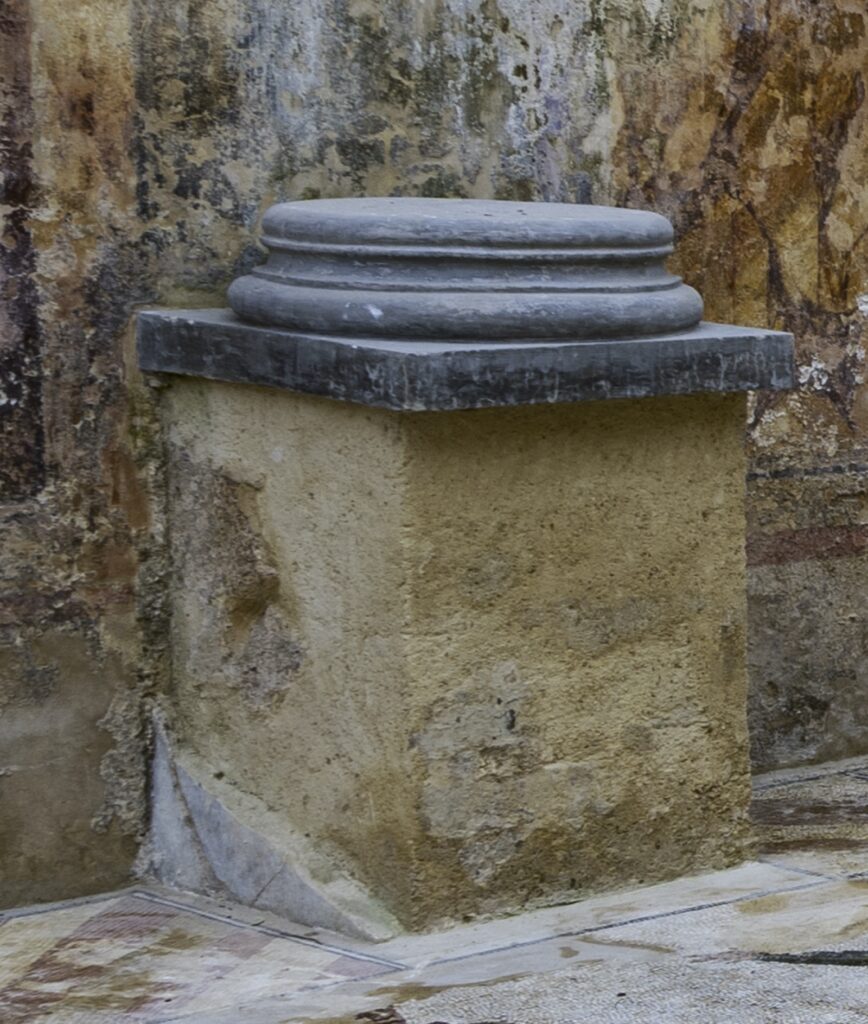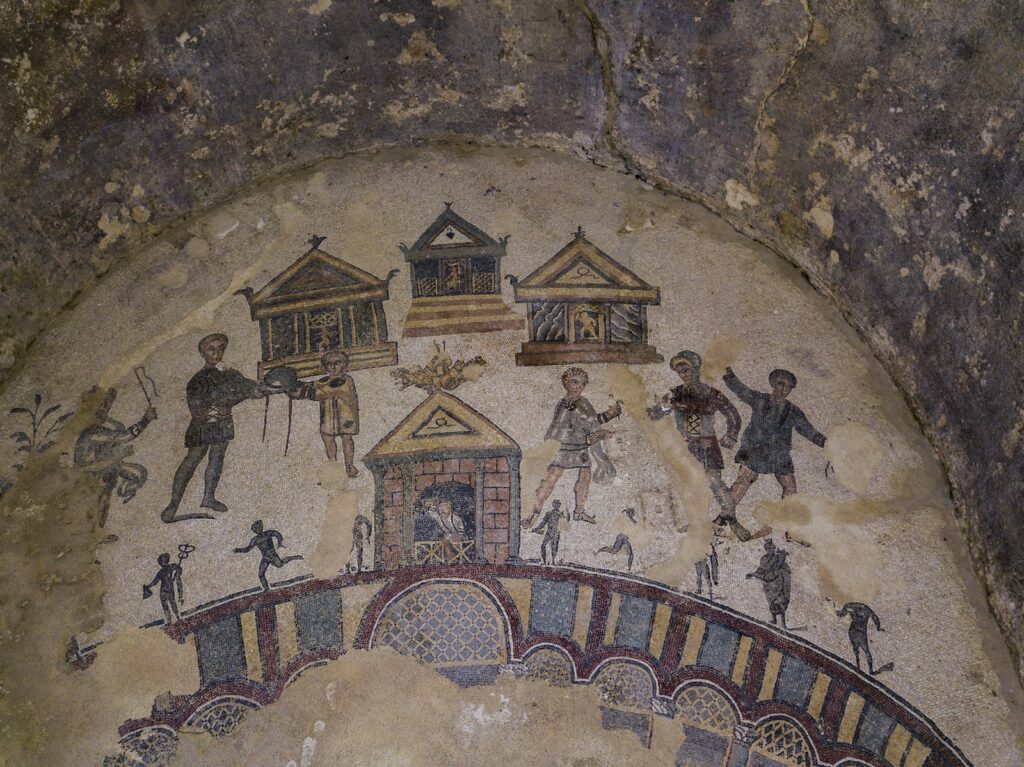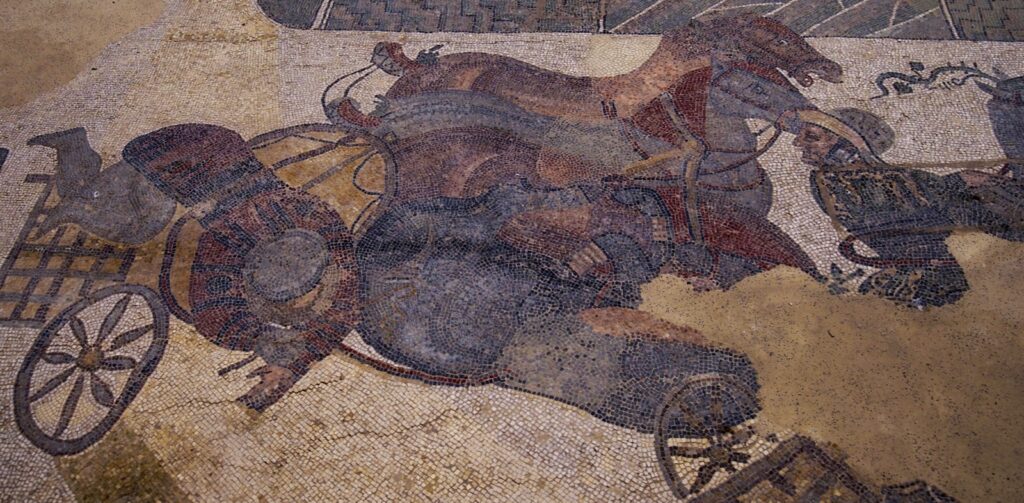This imposing space introduced by two entrances, one to the east restricted to the family of the dominus and a second to the west, intended for the public, is distinguished from the other rooms of the villa, for its dual function of access to the different places of the thermal baths.
Observation of the wall decorations and architectural elements which evoke a place of reception, due to the coexistence of frescoes imitating marble coverings and a series of columns  with
Attican bases
with
Attican bases
and
Corinthian capitals
, introduces the theme that unfolds in the floor mosaic. We appear to be witnessing a chariot race narrated meticulously in all its stages, starting from the carceres, depicted in the north apse,
 from which the chariots of the four factions departed in the
Circus Maximus
from which the chariots of the four factions departed in the
Circus Maximus
: the factio prasina (green), the russata (red), the albata (white) and the veneta (blue). The realistic and dynamic scene depicts the naufragium della factio prasina, i.e. the capsizing of the red faction chariot,
 and takes place in a circuit defined by the spina, a long marble basement adorned with statues and temples, completed at the two opposite ends by the
metae
and takes place in a circuit defined by the spina, a long marble basement adorned with statues and temples, completed at the two opposite ends by the
metae
. At the end of the seven laps of the race, the prize-giving ceremony is shown to the east, in the middle, near the threshold leading to the frigidarium. The victorious chariot belongs to the green faction, followed by the steeds and charioteers of the other factions. The triumphant charioteer is welcomed by a tuba player and a magistrate who holds the prizes: a palm branch and a bag of money.